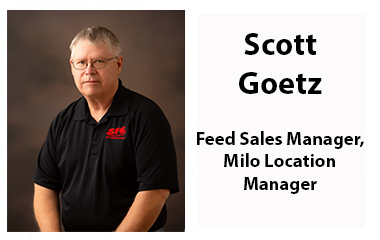Stretch Your Winter Feed Dollars
Sep 13, 2022

Cattle feed cost is the single largest expense in a cow/calf operation. In fact, feed costs account for around 50% of total operation costs. Here are a few tips to stretch your feed dollars for the upcoming winter.
Grazing is the most cost-effective way to feed your cows. If you were lucky enough to get rain this summer, stockpiled grass will allow your cows to graze most of the winter. Running cattle on corn stalks is another way to extend grazing days. But remember, the value is gone from corn stalks long before the corn stalks are gone, and cattle on stalks need supplemental protein. A good way to add that protein and utilize all the forage available is with protein tubs. Moving them around to different areas of the pasture or stalk field will cause the cattle to graze areas which they may not normally graze.
Another method of savings can come from the storage of harvested forages. When they are not stored properly, they lose volume and nutritional value. Round bales are best stored inside, which is not possible for most of us. The next best way is a well-drained surface with a layer of rock to help keep the bottom dry, minimizing waste. Always ensure proper spacing between bales, this allows air movement and helps drying during bad weather. Silage is another high-cost forage, it needs to be harvested at the right moisture. Too wet, you will get shrink loss; too dry, you will get a poor pack. Use of inoculants will help with proper fermentation. In a drought year like we had this year, nitrates are a huge concern. Getting nitrate samples are a must. If you use byproducts like wet distillers, make sure you keep storage time in mind. Wet distillers need to be used within 7 to 10 days, even less in the summer. Try to order what you can use up in these time frames.
Know what you are feeding, along with samples for nitrates, get nutritional analysis on hay and silage. There is a chance you could be over feeding, which adds to your feed cost. Waste at feeding is a huge cost. Research shows cattle with 24-hour free-choice access can result in 25-45% waste of hay. Options to reduce that would be waste reducing rings, limited time access to hay, or unrolling or processing bales.
Contact us at SFG. Mike or Scott would be happy to come pull samples of hay and silage. We can also talk about what supplement options we have to offer and discuss what would work best for your operation.